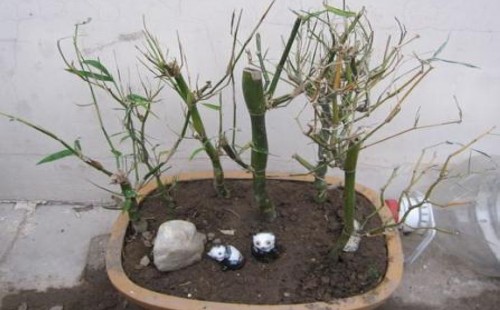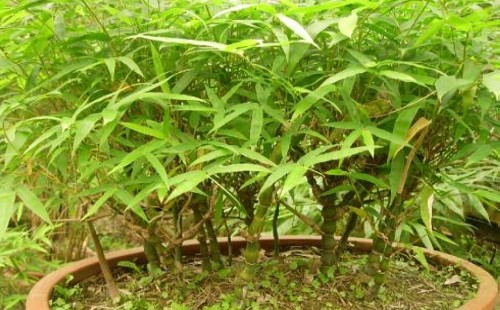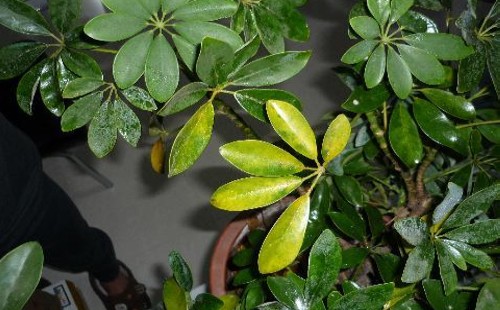Control measures of withered and yellow branches and leaves of potted Phyllostachys pubescens
In the last article, the editor has introduced the phenomenon that the branches and leaves of potted Phyllostachys pubescens are withered and yellow due to improper maintenance and management. In order to avoid the phenomenon of withered and yellow branches and leaves of Phyllostachys pubescens, today I would like to share with you the relevant prevention and control measures. So, how to prevent and cure the withered and yellow branches and leaves of potted Buddha belly bamboo? Let's get up and have a look.

When the environment originally suitable for the growth of Phyllostachys pubescens becomes no longer suitable, bad growth phenomena such as withered and yellow branches and leaves will occur, especially in the midsummer season. It can be seen that the daily maintenance and management measures of potted Buddha belly bamboo often need to be flexibly controlled according to different seasons. Because of different seasons, maintenance and management work is often not only the same. Therefore, in order to avoid the phenomenon of withered and yellow branches and leaves of potted Phyllostachys pubescens, we can carry out scientific and reasonable management in accordance with the following maintenance methods.
The main results are as follows: 1. The soil used for potted Phyllostachys pubescens should not only be fertile and loose, permeable and permeable, but also need to have a certain ability to preserve water and fertilizer. As a family pot cultivation, it can be retted with organic manure such as mountain mud and livestock and poultry manure, and then added to the pot soil.
2. As a kind of bamboo, the root of Phyllostachys pubescens is very well developed, and it is easy to cover the bottom of the basin when it grows into an adult plant. Therefore, it is necessary to change the basin and repair the root. It is usually replanted with a larger flowerpot after root repair, and then covered with new pot soil. During this period, it is especially necessary to cut off the dense fibrous roots, old and weak disease and insect root nodes, so as to promote the plant to germinate new roots, grow better, and at the same time be more conducive to the germination of new bamboo shoots.
3. Summer is a difficult season for potted Phyllostachys pubescens, especially in midsummer. During this period, in addition to increasing watering, more water spraying is needed to keep moisture and cool down. When the air humidity is suitable, the plant can carry out normal water transfer and exchange, so as to ensure that the plant can maintain the green growth state of branches and leaves. In particular, to avoid the hot summer sun exposure, plants often because the water can not keep up with the problem of withered branches and leaves. Therefore, proper shading is very necessary to protect plants.
4. The period from May to September is usually the high incidence period of plant diseases and insect pests, because the temperature is often relatively high during this period, if the plant is in a hot and humid environment and not ventilated enough, it is easy to breed diseases and insect pests. Once found, it should be killed in time. If the branches and leaves of Phyllostachys pubescens turn yellow, it is generally difficult to promote it to return to green, so we need to cut off the yellowing part of the leaves, usually only need to retain the petiole and the base of the leaves.
If we can manage scientifically in the later stage and do a good job of watering and applying water and fertilizer, it will usually take more than a month to sprout new buds and pull out new leaves. And there may also be the phenomenon of old leaves turning green, when the ornamental value of potted plants will be gradually improved.
Time: 2019-05-30 Click:
- Prev

What if the leaves of potted bamboo are dry and yellowed?
Potted Phyllostachys pubescens is often of ornamental value for its elegant plant type and emerald green leaf color. However, once the leaves become dry or yellowed, it will greatly reduce the ornamental value. Obviously, when this happens, there must be something wrong with the growth of the plant.
- Next

What if the leaves of potted goose palm wood turn yellow?
Goose palm wood branches and leaves are very unique, and the leaves remain evergreen and glossy, so it is a rare indoor foliage plant. However, as foliage plants, their leaves are often yellowed due to the destruction of their growing environment. As a kind of foliage plant suitable for indoor cultivation, goose palm wood is also the same.
Related
- Fuxing push coffee new agricultural production and marketing class: lack of small-scale processing plants
- Jujube rice field leisure farm deep ploughing Yilan for five years to create a space for organic food and play
- Nongyu Farm-A trial of organic papaya for brave women with advanced technology
- Four points for attention in the prevention and control of diseases and insect pests of edible fungi
- How to add nutrient solution to Edible Fungi
- Is there any good way to control edible fungus mites?
- Open Inoculation Technology of Edible Fungi
- Is there any clever way to use fertilizer for edible fungus in winter?
- What agents are used to kill the pathogens of edible fungi in the mushroom shed?
- Rapid drying of Edible Fungi

